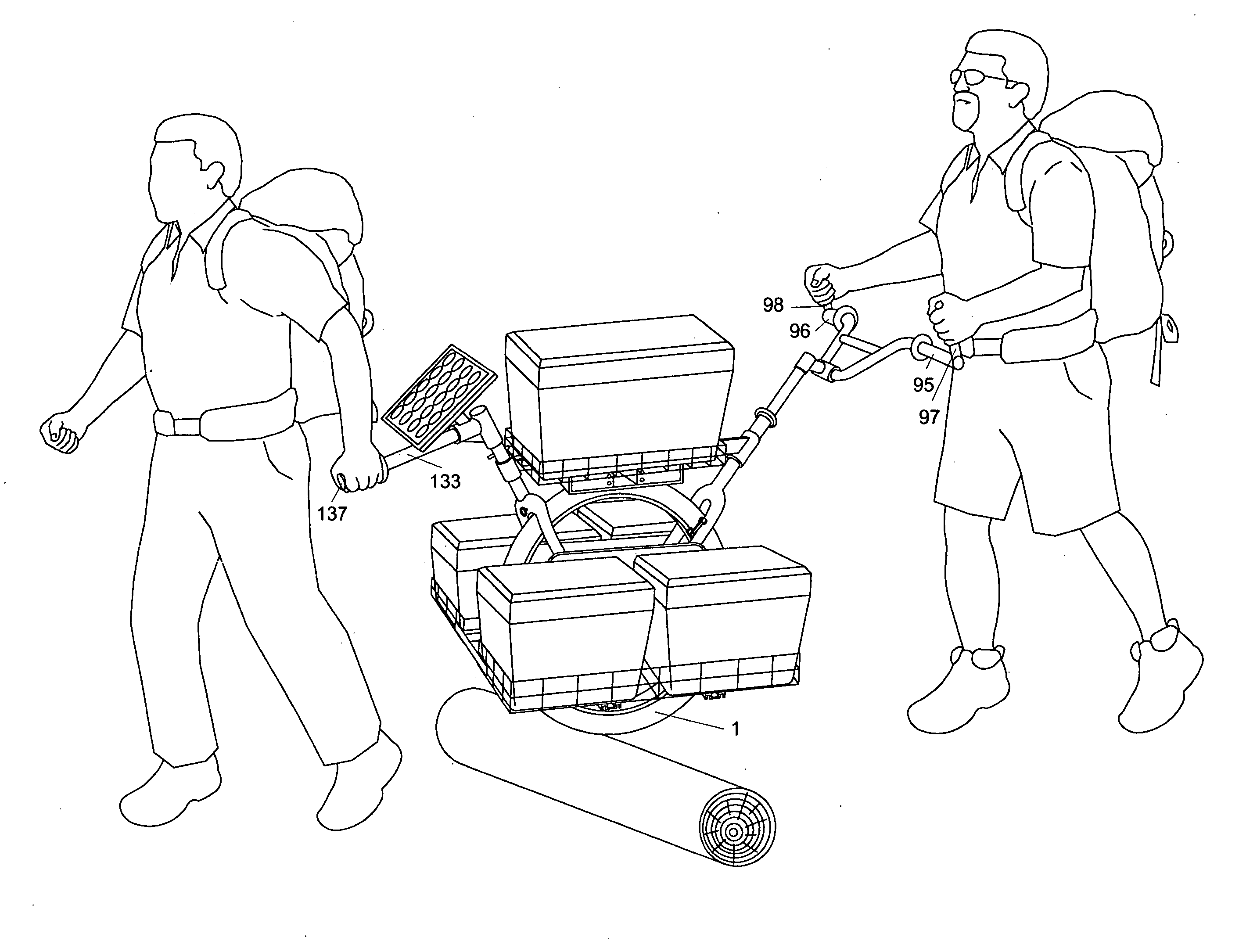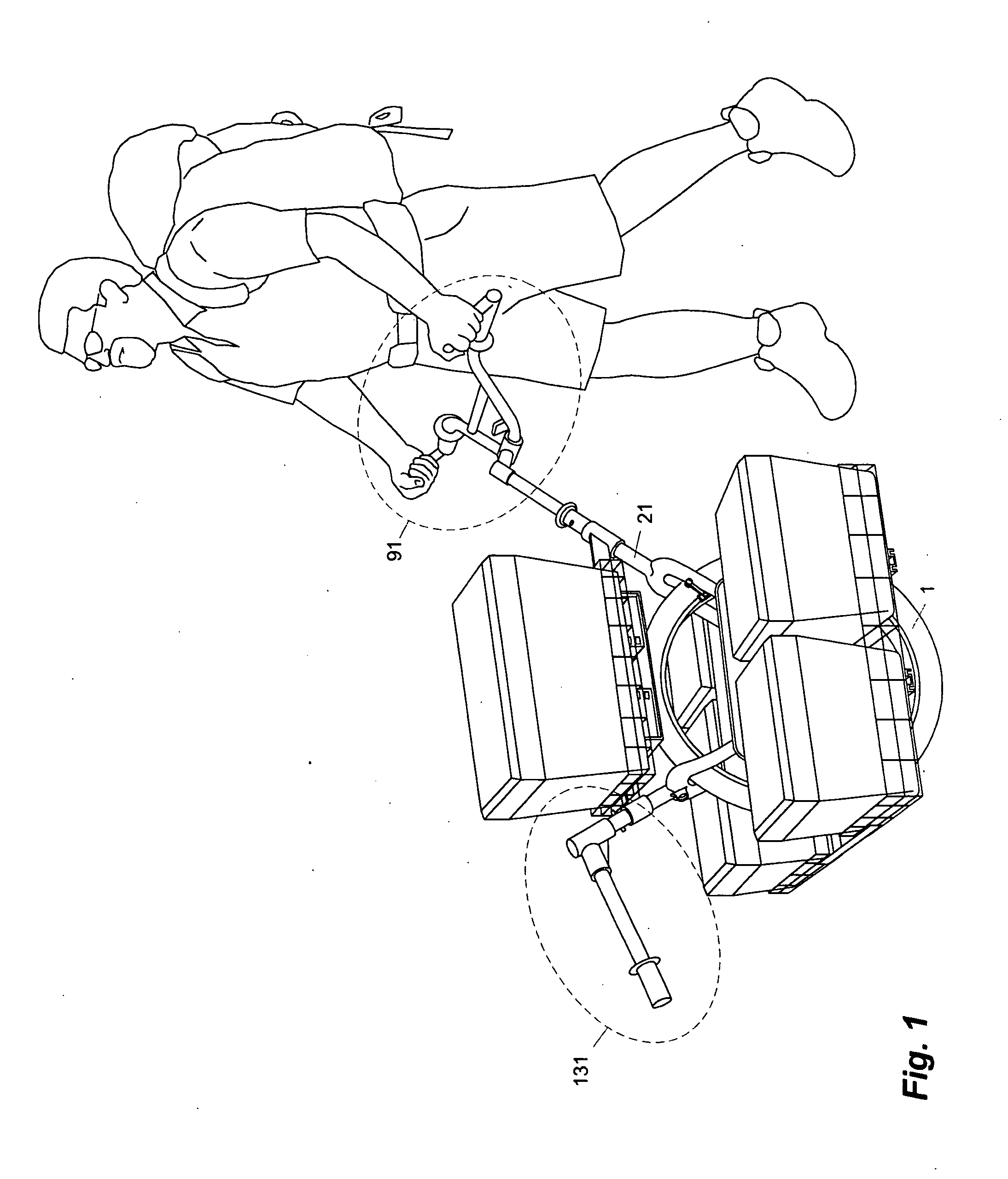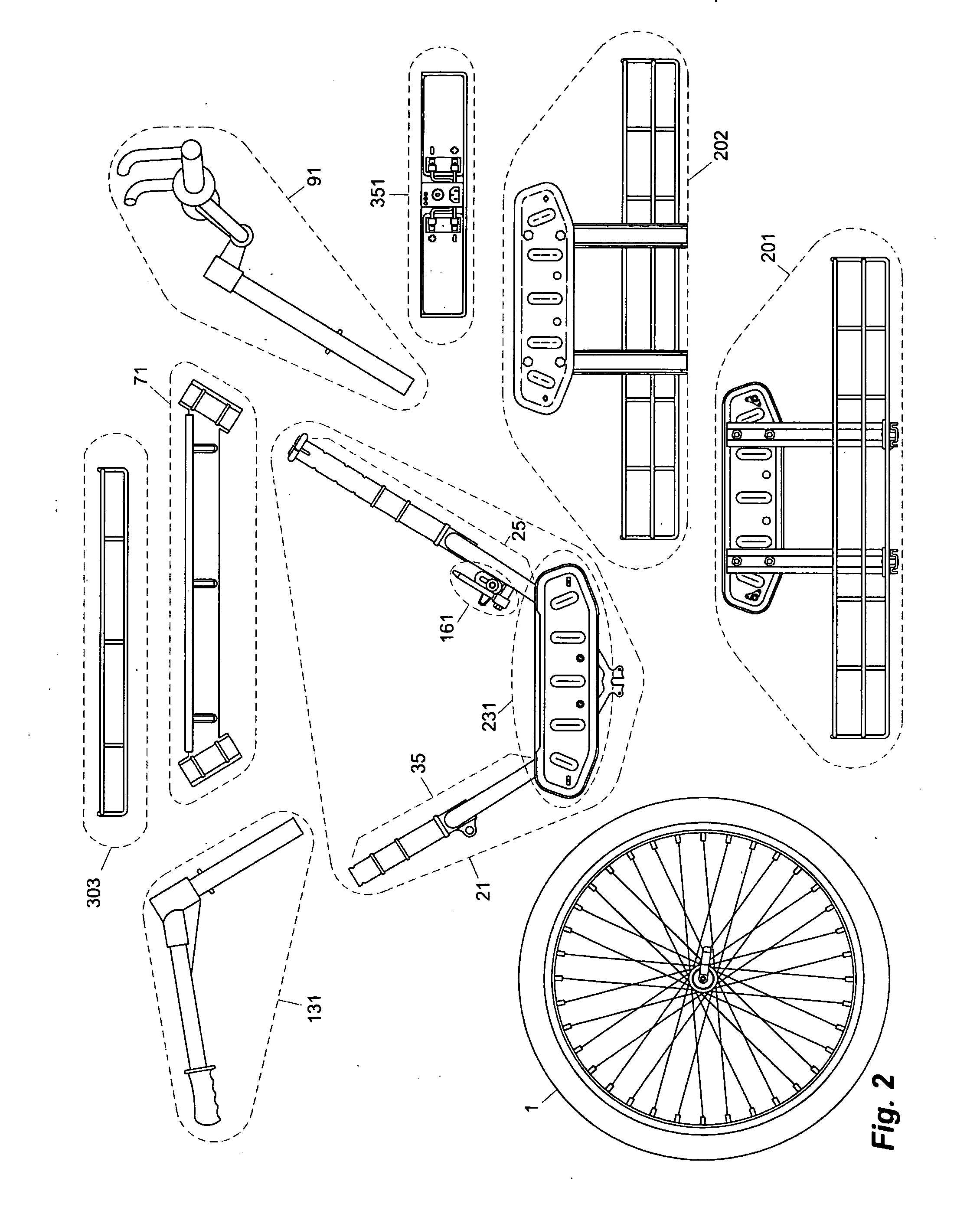Adaptable Rugged Terrain Cart
a cart and rugged technology, applied in the direction of transportation items, vehicular safety arrangements, pedestrian/occupant safety arrangements, etc., can solve the problems of requiring the operator to lift or bear a significant portion of the dead weight of the load, similar prior art designs forgo the provision of a third or additional person, and similar prior art designs forgo the provision of non-human sources of motive power. , to achieve the effect of minimizing the vertical height of the center of mass of the load, easy and comfortable pro
- Summary
- Abstract
- Description
- Claims
- Application Information
AI Technical Summary
Benefits of technology
Problems solved by technology
Method used
Image
Examples
Embodiment Construction
[0033]The invention is generally described as a cart for transporting equipment and provisions over rough, rugged or uneven terrain, such as a trail. The invention's primary mode of operation is shown in FIG. 1. with the primary operator positioned at the back, and pushing the device, whose center of mass is balanced and completely borne by the wheel (1) and frame (21), by being positioned along the vertical line passing through the middle of the axle (11).
[0034]As seen in FIG. 2, the invention is comprised of several core assemblies with each assembly itself being composed of subsidiary members and components. The invention has a single wheel (1), which is attached to a rigid frame assembly (21), lower portions of which form a wheel housing, and upper portions of which provide structures for the attachment of an assembly intended for steering (91) and an assembly intended for assistance in lifting or portage (131). A removable horizontal truss member (71) couples between location p...
PUM
 Login to View More
Login to View More Abstract
Description
Claims
Application Information
 Login to View More
Login to View More - R&D
- Intellectual Property
- Life Sciences
- Materials
- Tech Scout
- Unparalleled Data Quality
- Higher Quality Content
- 60% Fewer Hallucinations
Browse by: Latest US Patents, China's latest patents, Technical Efficacy Thesaurus, Application Domain, Technology Topic, Popular Technical Reports.
© 2025 PatSnap. All rights reserved.Legal|Privacy policy|Modern Slavery Act Transparency Statement|Sitemap|About US| Contact US: help@patsnap.com



